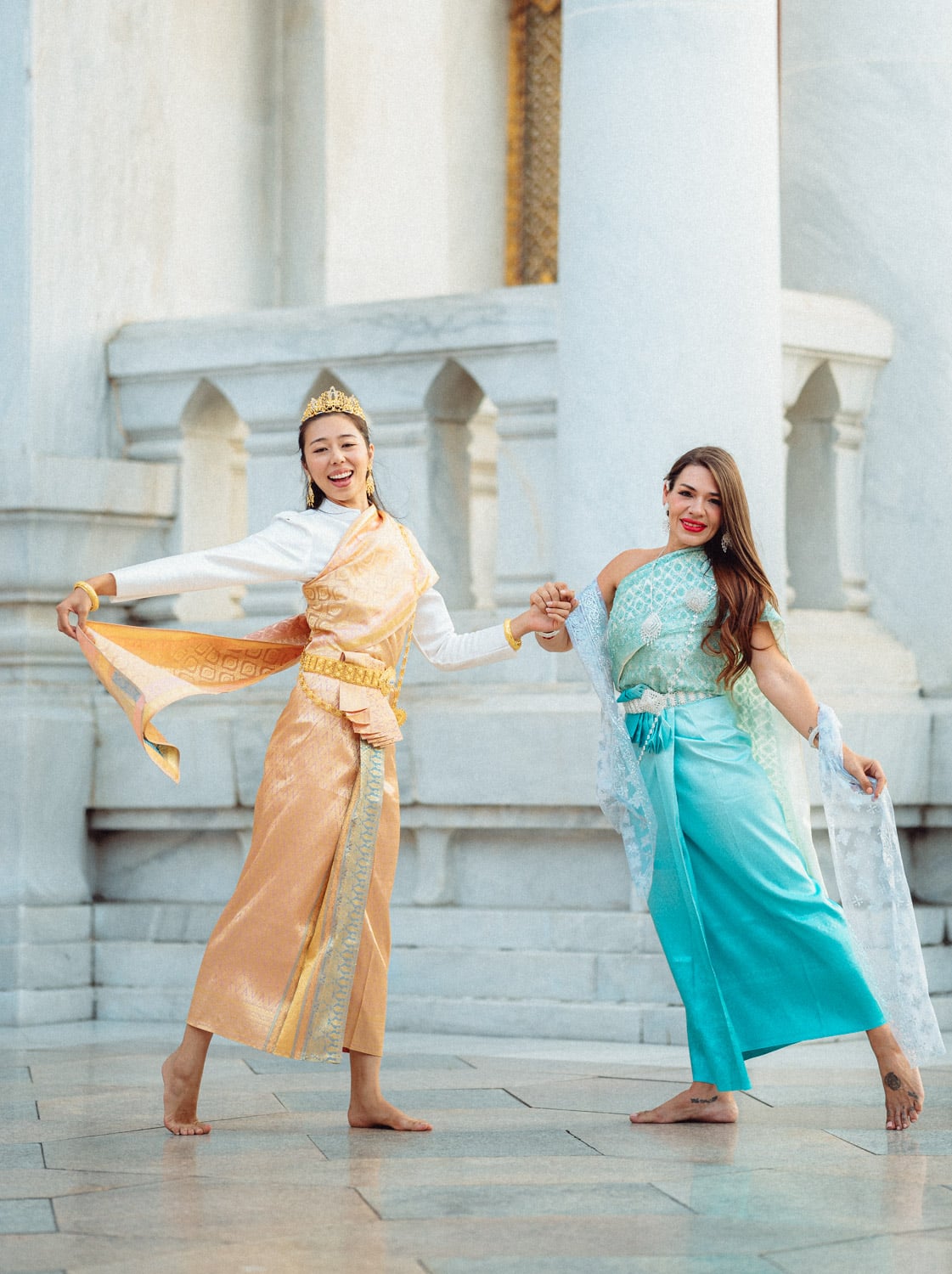Thai cultural attire is a vibrant tapestry that weaves together centuries of history, tradition, and artistry. These traditional outfits are more than just clothing; they are a reflection of Thailand’s identity, illustrating the nation’s evolving culture and its appreciation for beauty and craftsmanship. From the regal outfits of the Ayutthaya period to the modern adaptations worn today, Thai clothing tells a story that continues to captivate locals and visitors alike.
The Origins of Thai Attire
In ancient times, the foundation of Thai attire was influenced by the country’s climate and the resources available. The warm and humid weather dictated the use of light, breathable fabrics, with silk becoming a quintessential material for Thai clothing. Thai silk, renowned for its luxurious texture and shimmering appearance, became a symbol of prestige and elegance. It is still a staple in many traditional outfits, valued for its beauty and durability. Clothing served as more than protection from the elements; it was an expression of identity, class, and even spiritual beliefs.
Sukhothai Period: Simplicity and Grace
The Sukhothai period (1238–1437) marked the emergence of a distinct Thai identity, and this was reflected in the clothing of the era. During this time, outfits were simple yet elegant, emphasizing natural beauty and grace. Women often wore a “sabai,” a long piece of fabric draped over one shoulder, paired with a “pha nung,” a wraparound skirt. Men’s attire consisted of similar draped garments, exuding a sense of practicality and comfort. These garments were often dyed using natural pigments, with patterns that echoed the surrounding environment.
Ayutthaya Period: Regal and Ornate
Moving into the Ayutthaya period (1350–1767), Thai clothing evolved to become more elaborate and adorned. This era was characterized by increasing interactions with foreign cultures, which influenced the designs and materials used. Women’s outfits became more intricate, featuring embroidered patterns and gold-threaded fabrics. Accessories, such as ornate jewelry and headdresses, added a regal touch to the ensembles. Men’s attire also grew more sophisticated, often incorporating layered garments and detailed embroidery. These styles symbolized wealth and status, especially among the royal court and nobility.
Rattanakosin Period: Blending Tradition with Modernity
The Rattanakosin period, which began in 1782, brought further refinement to traditional Thai clothing. King Rama V’s modernization efforts included the adaptation of Western-style tailoring, which blended seamlessly with traditional elements. The iconic “chut thai” emerged during this era, becoming a national symbol of Thai attire. This outfit includes the “sabai” for women, often paired with a tailored blouse, and the “jong kraben,” a wraparound garment for both men and women. This blending of cultures highlighted Thailand’s openness to innovation while preserving its rich heritage.
Regional Variations in Thai Clothing
Each region of Thailand has its own unique take on traditional attire, reflecting the diversity of the country’s culture. For instance, the northern region, influenced by Lanna culture, is known for its use of rich, dark colors and intricate patterns. Women in this area often wear a “longyi” skirt with a fitted blouse, complemented by silver jewelry. In contrast, the southern region’s clothing incorporates bright colors and lightweight fabrics, suited to the tropical climate. The Isan region in the northeast, known for its silk production, features bold patterns and vibrant hues that represent the lively spirit of its people.
Thai Attire in Festivals and Ceremonies
Traditional Thai outfits are not only a reflection of history but also an integral part of the country’s festivals and ceremonies. During events like Songkran (the Thai New Year) or Loy Krathong, people don traditional attire to honor their heritage. Weddings and other significant life events also see the incorporation of traditional clothing, with specific designs chosen to symbolize prosperity, happiness, and respect. Monks’ robes and ceremonial attire further illustrate the deep connection between clothing and spirituality in Thai culture.
Modern Adaptations of Traditional Thai Clothing
In modern times, traditional Thai attire has found a balance between preservation and innovation. Designers often incorporate traditional elements into contemporary fashion, creating pieces that honor the past while appealing to today’s aesthetic sensibilities. This fusion ensures that Thai cultural attire remains relevant, allowing younger generations to connect with their heritage in meaningful ways. Runway shows and fashion weeks in Thailand often showcase these innovative designs, highlighting the versatility and timeless appeal of Thai clothing.
Experiencing Thai Attire as a Visitor
For tourists and visitors, wearing traditional Thai outfits offers a unique opportunity to immerse themselves in the country’s culture. Thai costume rental services, like those offered by Siam Crown, provide an accessible way to experience this tradition. Whether for a photoshoot, a cultural event, or simply a memorable day exploring Thailand, donning traditional attire allows individuals to appreciate the artistry and significance of these garments firsthand. Rentals often include expert guidance on how to wear and style the outfits, enhancing the overall experience.
Siam Crown: Your Destination for Authentic Thai Clothing
Siam Crown specializes in offering authentic Thai clothing for rent, ensuring that every piece reflects the elegance and craftsmanship of traditional designs. With a wide selection of outfits and accessories to choose from, customers can find the perfect ensemble for any occasion. The rental experience is both convenient and enriching, making it an ideal choice for anyone looking to connect with Thailand’s cultural heritage. Siam Crown’s commitment to authenticity and customer satisfaction has made it a trusted name in Thai costume rental.
A Living Tradition
Traditional Thai attire is more than a fashion statement; it is a bridge to the past, a celebration of artistry, and a testament to the country’s rich cultural heritage. By embracing these garments, we honor the generations of artisans and wearers who have kept this tradition alive, ensuring that it continues to inspire and enchant for years to come. Visit Siam Crown to explore the beauty and elegance of authentic Thai costume rental, and experience the magic of Thai cultural attire for yourself. As you step into these garments, you become part of a legacy that celebrates Thailand’s vibrant history and its enduring cultural treasures.



